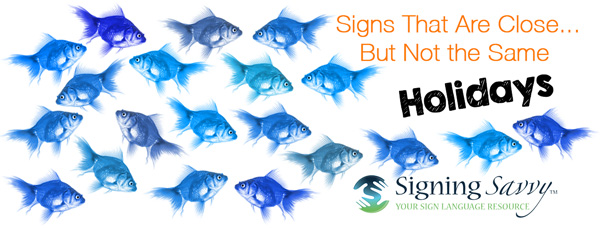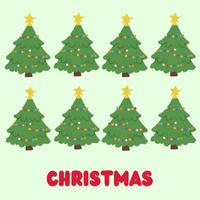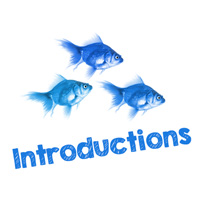
Signs That Are Close... But Not the Same — Holidays
This article is part of our “Signs That Are Close... But Not the Same” series, which highlights signs that look similar, but have different meanings.
The ASL signs shown below look similar, but are not the same. There are many ASL signs that when produced look similar, but in fact have a completely different meaning. Below you will find examples of such signs. Watch closely to see if you can see the differences. In addition, watch my eyebrows, look to see when I tilt my head or lean my body in a certain way, even what my mouth is doing. These nuances are called inflections and trust me, inflections matter.
These examples are all signs related to holidays.
1. Halloween vs. Raccoon
Both HALLOWEEN and RACCOON begin with palms toward the face and fingers near the eyes. HALLOWEEN has a peek-a-boo motion as if the whole face is unmasked, where RACCOON is just unmasking the eyes, similar to the 1960's Batman dance move.
- HALLOWEEN: Both hands in the open B handshape hands slightly curved, begin covering the face. The hands then open up and move away from the face quickly two times.
- RACCOON: Both hands in the V handshape are sideways in front of the eyes then close as they are pulled past the eyes twice.
 |
2. Election Day vs. Tea vs. Soft Drink vs. Fart
ELECTION DAY uses the signs ELECTION + DAY.
However, the sign for ELECTION looks close, but not the same as several other signs: TEA, SOFT DRINK and FART.
In all of these signs, the dominant hand is in the F handshape and begins its motion above the non-dominant hand. Take care not to confuse the motions that follow in each sign, so if you are requesting TEA or a SOFT DRINK, you will not be rewarded with a FART!
- ELECTION: The dominant hand in the F handshape is placed in the non-dominant hand in the O handshape. Think of placing the ballot into the voting box.
- TEA: The dominant hand in the F handshape is held above the non-dominant hand and makes a circular motion. Think of swirling a tea bag in a cup.
- SOFT DRINK: The tip of the dominant hand in the F handshape goes inside the top of the non-dominant hand, then pulls up and changes to the 5 handshape and slaps back down on top of the non dominant hand. Think of the top of a bottle.
- FART: The dominant hand in the F handshape moves down the extended index finger. Think of the first letter of the word FART or FLATULENCE.
 |
||
3. Thanksgiving vs. Thank You vs. Thankful
These 3 signs having to do with thanks are very similar. All use the open B handshape, but THANK YOU, which you may use most throughout the year, uses only the dominant hand, while THANKSGIVING and THANKFUL use both hands. Watching for context in a signed sentence will help determine which word is being signed.
- THANK YOU uses one smooth downward motion with one hand, and conveniently, the same sign is used to say YOU ARE WELCOME.
- THANKSGIVING uses double movements with both hands. The movement is a little circular and moves off to the side.
- THANKFUL uses double movements with both hands. The movement is more straightforward.
 |
||
4. Valentine's Day vs. Valentine / Heart (as in "the shape") vs. Heart (as in "the body part")
VALENTINE’S DAY uses the sign for VALENTINE + DAY.
The sign for VALENTINE is also one way to sign HEART (as in, "the shape”). However, to sign HEART (as in, "the body part") you use a different sign. Both VALENTINE and HEART (as in, "the body part") use the open 8 handshape by the heart, however, VALENTINE uses two hands and HEART (as in, "the body part") only uses one hand.
- VALENTINE: Both hands in the open 8 handshape, middle fingers draw the shape of a heart on the non-dominant side of the chest over the heart.
- HEART (as in, "the body part"): Dominant hand in the open 8 handshape, palm toward you body. The middle finger of the dominant hand taps the chest over the heart two times.
 |
5. St. Patrick's Day vs. Ireland vs. Potato
ST. PATRICK'S DAY uses the signs IRELAND + DAY.
The first part of the sign for ST. PATRICK'S DAY, the sign IRELAND, looks similar to the sign for POTATO, which is a major agricultural crop in Ireland. Both IRELAND and POTATO have the dominant and non-dominant hands in the same location, the dominant hand is in the bent V handshape and the non-dominant hand is in the S handshape. The subtle difference is the movement of the dominant hand as it comes down to land on the non-dominant hand.
- IRELAND: The dominant hand in the bent V handshape makes a circular motion and lands on top of the non-dominant hand in the S handshape.
- POTATO: The dominant hand in the bent V handshape comes straight down to land and tap two times on the non-dominant hand in the S handshape.
 |
6. Easter vs. None vs. Eggs vs. Weight vs. Name
EASTER, NONE, and EGGS use similar movements, but with different handshapes. EGGS, WEIGHT, and NAME all use the same H handshape, but are distinguished by their different movements. Particularly, WEIGHT and NAME look similar, but you will notice the movement used is different across these two signs. It is an important difference you will want to sign correctly, so when you are first meeting someone you will say, “My name is…” and not, “My weight is…”!
- EASTER: Both hands in the E handshape start facing each other and break apart outward two times.
- NONE: Both hands in the O handshape in front of the torso, both move away from the body firmly.
- EGGS: Both hands in the H handshape start together. Both hands split apart moving outward two times.
- WEIGHT: Both hands in the H handshape start together. The dominant hand makes a downward motion. When signing WEIGHT think of the weight on a scale.
- NAME: Both hands in the H handshape start together. The dominant hand taps on top of the non dominant hand two times. When signing NAME think of forming an X with your fingers, and the X represents the place where a name is placed when writing a signature.
 |
||
7. Memorial Day vs. Look Back
MEMORIAL DAY uses the signs for LOOK BACK + DAY. Think of taking a LOOK BACK to honor fallen military personnel.
 |
8. Vacation vs. Day Off vs. Animal vs. Have
VACATION, DAY OFF, ANIMAL, and HAVE are all signed with the hands at the chest and use similar looking handshapes.
VACATION and DAY OFF use the same open 5 handshape, palm orientation, location, and movement with the only difference being that VACATION taps twice and DAY OFF taps once. How can you remember the difference between the two? Think of DAY OFF tapping only once because it is a single day, while a VACATION (hopefully!) is for multiple days. Note: The signs for VACATION and HOLIDAY are not "close but not the same," because they are actually the same!
ANIMAL and HAVE use the same bent open B handshape, palm orientation, location, and movement with the only difference being that ANIMAL taps twice and HAVE taps once.
- VACATION: Both hands in the 5 handshape, palms down. The thumbs of both hands tap just above your armpits two times.
- DAY OFF: Like VACATION, but taps one time.
- ANIMAL: Both hands in bent open B handshape palms facing your body. The fingertips touch just under the shoulders and push inward two times.
- HAVE: Like ANIMAL, but taps one time.
 |
||
9. Go vs. Come
These versions of GO and COME both use the 1 handshape moving in front of the chest, however the palm orientation and direction of movement is different.
- GO: GO has hands in the 1 handshape moving forward, away from the body, as if you and someone else are going somewhere.
- COME: COME has the hands in the 1 handshape move toward the body, as in a beckoning motion.
 |
How can I figure out the difference between signs on my own?
If you see two signs that look close, but not the same, and you’re not sure, you may use Signing Savvy features to help you figure out the difference. All of our signs have sign descriptions and memory aids that members may access. Reading the sign description and memory aids for the signs will help you figure out the small differences between them that your eyes don’t catch at first. We also recommend using the pause and slow motion feature to slow down the video, so you may take a closer look. These features are available to Signing Savvy members.
ADVERTISEMENTS
 Brenda Cartwright is a Coda, seasoned interpreter, a master teacher, well known presenter, and author of several best selling sign language and interpreting textbooks from the RID Press. For 35 years Brenda was the Chair of the Sign Language Interpreter Program at Lansing Community College in Lansing, Michigan.
Brenda Cartwright is a Coda, seasoned interpreter, a master teacher, well known presenter, and author of several best selling sign language and interpreting textbooks from the RID Press. For 35 years Brenda was the Chair of the Sign Language Interpreter Program at Lansing Community College in Lansing, Michigan. Signs That Are Close... But Not the Same — Calendar Signs
Signs That Are Close... But Not the Same — Calendar Signs Signs That Are Close... But Not the Same — Thanksgiving
Signs That Are Close... But Not the Same — Thanksgiving Signs That Are Close... But Not the Same — Christmas
Signs That Are Close... But Not the Same — Christmas Signs That Are Close... But Not the Same — Introductions
Signs That Are Close... But Not the Same — Introductions Signs That Are Close... But Not the Same — Food
Signs That Are Close... But Not the Same — Food Signing Dates – Signing the Day of the Month
Signing Dates – Signing the Day of the Month







